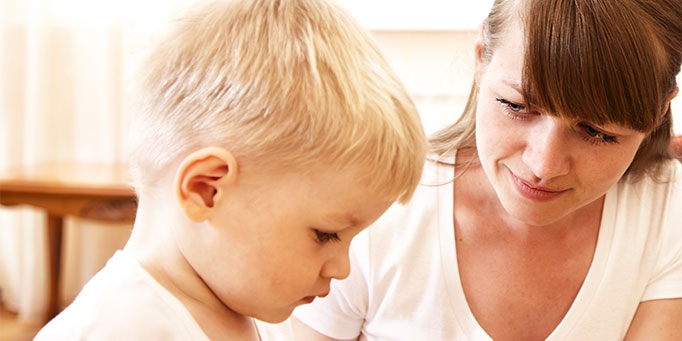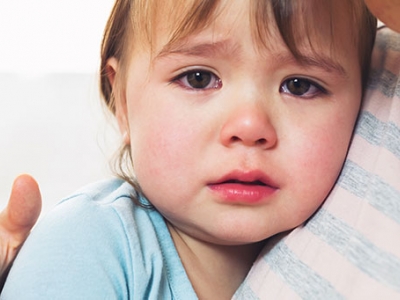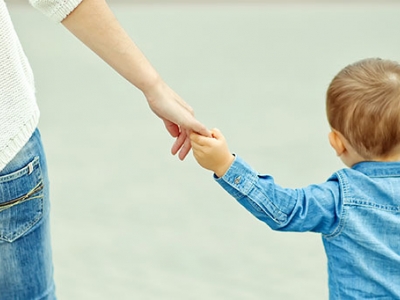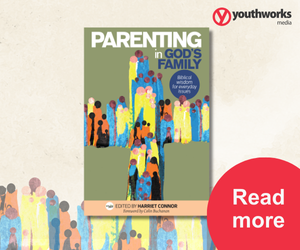
Little kids, big feelings—how we can help
Dr Yixin Jiang Xu explains how adults can help to regulate children’s emotions.
In a previous article, I explained the brain science behind why little kids need our help to regulate their big feelings. Now we’re going to look at three practical steps for helping our little (and perhaps not so little) children when those strong emotions overwhelm them.
Step 1: Recognise and regulate our emotions
Our children’s strong emotions (crying, whining, tantrums, fear and anger) can be a trigger point for many of us. The first step we can take to help our children during emotionally charged moments is to reflect upon and recognise our own reactions.
Ask yourself: Am I reacting with anger, fear, frustration or impatience? Notice your body’s signals: Is my heart beating faster and my blood pressure rising? Am I on the verge of a fight–flight–freeze response myself, mirroring that of my child?
I know that when my toddler has tantrums I can definitely feel my body tense up; and when my patience is low and my frustration high, my words can be less than helpful and kind.
Our emotional and physical reactions often signal our discomfort with the emotions that have arisen in our children. Perhaps we are uncomfortable with their expressions of fear, anger or sadness, because they make us feel anxious or guilty. Perhaps we are fearful of losing control of the situation, thinking that it might reflect badly upon us as a parent. Perhaps we are simply tired and overstretched or feeling helpless and unsure of what to do.
We may need to repent of our own unhelpful reactions, knowing that God, our Father, is always gracious and compassionate. God is our safe haven: he knows all of our emotional struggles and invites us to rest in his patience and understanding. In this way, God is also our model, showing us how to empathise with our children and guide them through their emotional distress.
When your child has an emotional outburst, take a brief moment to calm down. If necessary, leave your child in a safe place and take a few minutes to yourself to breathe deeply and pray. Even Jesus needed to withdraw and pray when he was overwhelmed by emotion (e.g. Matthew 14:13; 26:36–44). As we self-regulate our emotions, we are also modelling this important life skill to our children.
Step 2: Co-regulate our children’s emotions
Be there
After recognising and managing our own emotions, we can turn our attention to our children. Firstly, this means being physically present with them. The very definition of co-regulation requires two people—in this case, a child uses an adult to help them calm down. The presence of a caring adult is a great comfort in itself.
Being present with our children is comforting regardless of what emotion they are feeling. During tantrums, our children still need us to be there (perhaps even more so), as it can be scary for them to feel ‘out of control’ by themselves.
I know that when my toddler is upset, she is often comforted more by my presence than my words, as I hold, hug and make myself available to her.
‘Be with’
Another important aspect of co-regulation is the idea of ‘being with’: meeting your child where they are with respect to how they are feeling. Whether they are feeling sad, scared or angry, we allow them to feel those feelings, showing empathy and validation.
When a child gets hurt, many parents try to brush away any distress by saying ‘You’re OK’ or distracting the child. But ‘being with’ means acknowledging the reality: ‘That hurt, didn’t it?’ (without necessarily making a big deal or being overly anxious on our part). When I simply acknowledge my daughter’s sadness or pain (such as when she has a fall), she will agree, ‘Yes, it hurts!’, have a quick cuddle and then bounce back from her distress.
Remember that we have a model of a perfect safe haven in God. God hears us when we honestly express our feelings before him. He does not dismiss our feelings; likewise, we should not trivialise or disregard our children’s feelings.
Label and retell
Finally, we can help our children to express their feelings in words. For babies and young toddlers, this simply means labelling their emotions. For older toddlers and preschoolers, we can extend this by retelling the story of what happened. Labelling emotions and retelling the event builds empathy, develops our children’s emotional understanding and vocabulary and helps them to process the event.
With older children, we can also pray together, modelling how to bring our feelings to God. For example, we can teach our children simple prayers like: ‘Dear God, I am feeling scared, but I know you are with me. Please keep me safe’. Prayer can help our children to make sense of the event as well as draw comfort from knowing that God listens and cares.
Step 3: Resolve the situation
Finally, we come to resolving the situation. Often we want to rush to this step—to set limits, problem-solve, teach and discipline our children. However, it is very important that we take the time to regulate their emotions first, so that they are calm (no longer in a fight–flight–freeze state) and more ready to listen to our instructions (engage their ‘thinking’ brain).
When we regulate our children’s emotions, we are creating an unconditional safe haven where they can express their feelings. After we validate those feelings, we may then need to set limits on behaviour. For example, if our child was angry, we may say, ‘I know you are feeling angry, but I can’t let you hurt anyone’, and follow through with any necessary consequences.
Older children can be involved in problem-solving. For example, if your child has a conflict with another child, ask him or her to brainstorm some solutions and then choose the most appropriate one together. Involving your child will give them a greater sense of responsibility for and ownership of the solution.
It is important that we set boundaries and limits on what is acceptable or unacceptable behaviour, and guide our children to wise solutions. Otherwise, if we stop at regulating our children’s emotions, we will be in danger of permissive parenting. The Bible instructs parents to disciple, guide, and teach our children:
Discipline your children, and they will give you peace; they will bring you the delights you desire. (Proverbs 29:17)
Grace for those challenging moments
Helping our children with their big feelings is one of the more challenging aspects of parenting. There will be times when we struggle to self-regulate our feelings. There will be times when we fail to empathise, ‘be with’ and connect with our children. Our sinful nature will get the better of us, and prevent us from being perfectly loving, understanding, patient and wise.
But we have a God who is perfect; he is gracious, patient and loving. When we honestly bring our struggles to God in prayer, he will be our help. May we rely on God’s wisdom and grace as we strive to be a safe haven for our children, just as God is for us. And may we point our children to God—our one sure refuge in the emotional storms of life.
Recommended reading:
Whole-brain Child by Daniel Siegel and Tina Payne Bryson (Scribe Publications, 2012)
Raising an Emotionally Intelligent Child by John Gottman (Fireside Books, 1998)
How to Talk So Little Kids Will Listen by Joanna Faber and Julia King (Scribner, 2017)
---
Dr Yixin Jiang Xu is a stay-at-home mother of a two-year-old girl and has a PhD in psychology. She facilitates a Facebook group Parenting babies and toddlers, where she provides parenting resources and webinars. She and her family attend St Paul's Anglican Church, Carlingford.
For more articles from Growing Faith, subscribe to our monthly e-newsletter.
To hear about the latest books and resources from Youthworks Media, subscribe here.








